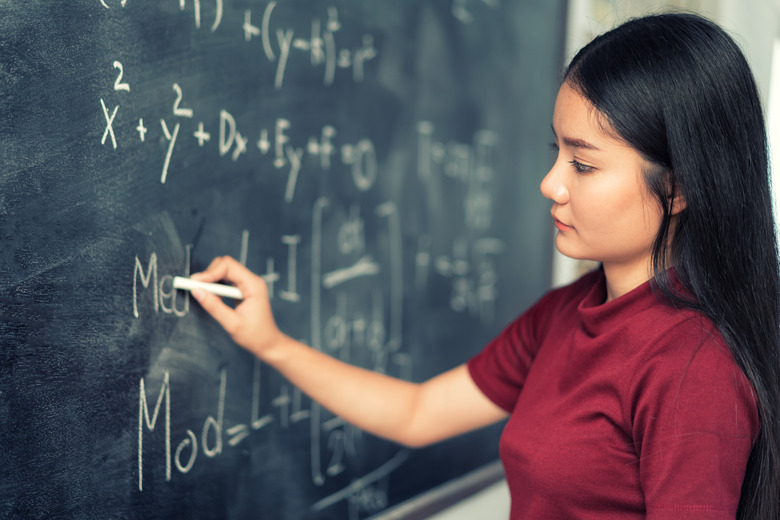Examples Of Real Life Probability
Probability is the mathematical term for the likelihood that something will occur, such as drawing an ace from a deck of cards or picking a green piece of candy from a bag of assorted colors. You use probability in daily life to make decisions when you don't know for sure what the outcome will be. Most of the time, you won't perform actual probability problems, but you'll use subjective probability to make judgment calls and determine the best course of action.
For a refresher course on basic probability, view the video below:
Planning Around the Weather
Planning Around the Weather
Nearly every day you use probability to plan around the weather. Meteorologists can't predict exactly what the weather will be, so they use tools and instruments to determine the likelihood that it will rain, snow or hail. For example, if there's a 60-percent chance of rain, then the weather conditions are such that 60 out of 100 days with similar conditions, it has rained. You may decide to wear closed-toed shoes rather than sandals or take an umbrella to work. Meteorologists also examine historical data bases to guesstimate high and low temperatures and probable weather patterns for that day or week.
Sports Strategies
Sports Strategies
Athletes and coaches use probability to determine the best sports strategies for games and competitions. A baseball coach evaluates a player's batting average when placing him in the lineup. For example, a player with a 200 batting average means he's gotten a base hit two out of every 10 at bats. A player with a 400 batting average is even more likely to get a hit – four base hits out of every 10 at bats. Or, if a high-school football kicker makes nine out of 15 field goal attempts from over 40 yards during the season, he has a 60 percent chance of scoring on his next field goal attempt from that distance. The equation is:
\(\frac{9}{15} = 0.60 \text{ or } 60\%\)
Insurance Options
Insurance Options
Probability plays an important role in analyzing insurance policies to determine which plans are best for you or your family and what deductible amounts you need. For example, when choosing a car insurance policy, you use probability to determine how likely it is that you'll need to file a claim. For example, if 12 out of every 100 drivers – or 12 percent of drivers – in your community have hit a deer over the past year, you'll likely want to consider comprehensive – not just liability – insurance on your car. You might also consider a lower deductible if average car repairs after a deer-related incident run $2,800 and you don't have out-of-pocket funds to cover those expenses.
Games and Recreational Activities
Games and Recreational Activities
You use probability when you play board, card or video games that involve luck or chance. You must weigh the odds of getting the cards you need in poker or the secret weapons you need in a video game. The likelihood of getting those cards or tokens will determine how much risk you're willing to take. For example, the odds are 46.3-to-1 that you'll get three of a kind in your poker hand – approximately a 2-percent chance – according to Wolfram Math World. But, the odds are approximately 1.4-to-1 or about 42 percent that you'll get one pair. Probability helps you assess what's at stake and determine how you want to play the game.
Cite This Article
MLA
Tucker, Kristine. "Examples Of Real Life Probability" sciencing.com, https://www.sciencing.com/examples-of-real-life-probability-12746354/. 21 December 2020.
APA
Tucker, Kristine. (2020, December 21). Examples Of Real Life Probability. sciencing.com. Retrieved from https://www.sciencing.com/examples-of-real-life-probability-12746354/
Chicago
Tucker, Kristine. Examples Of Real Life Probability last modified August 30, 2022. https://www.sciencing.com/examples-of-real-life-probability-12746354/
